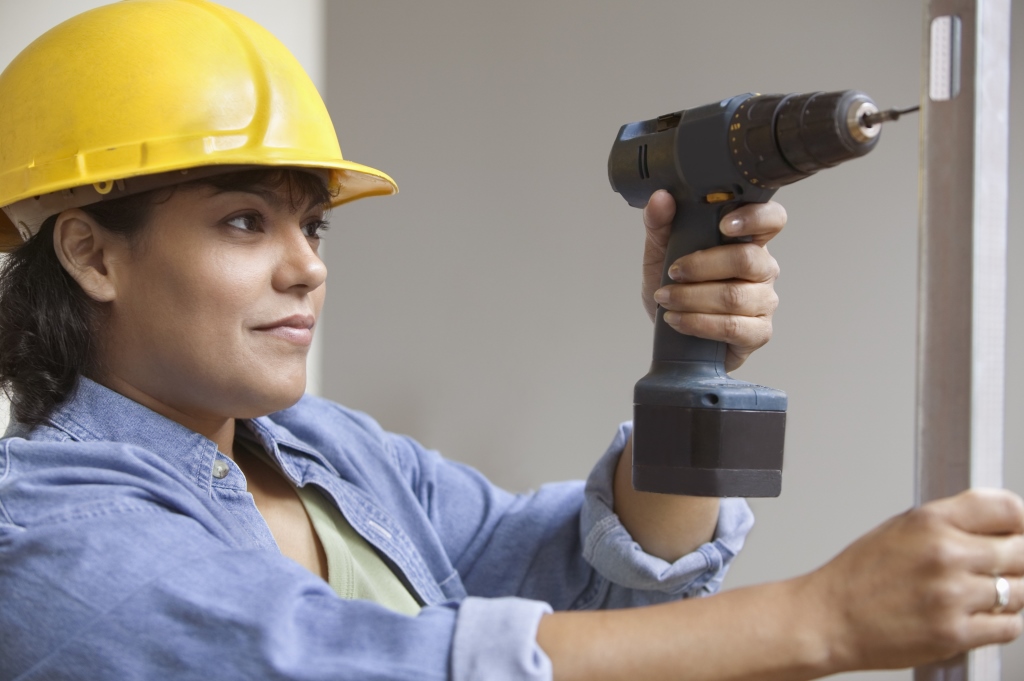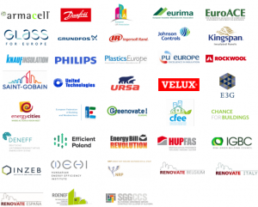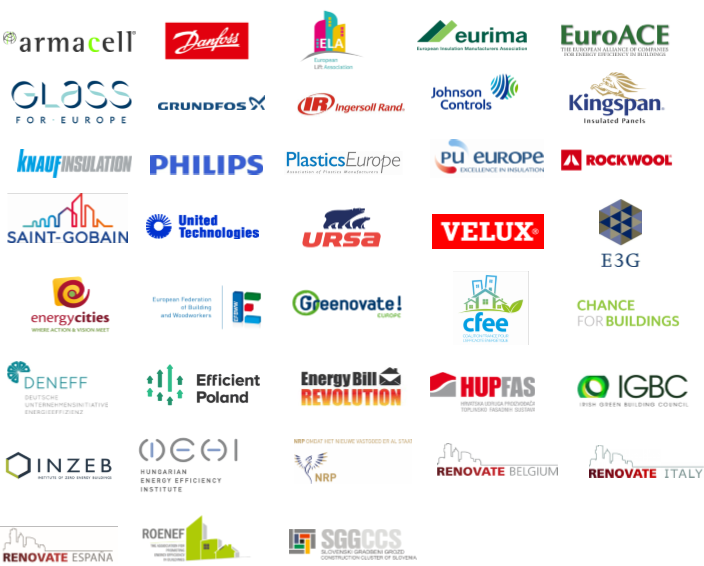Renovate Europe responds to MFF Public Consultation
Renovate Europe provided its imput to the public consultations on the post-2020 MFF.
Why is Energy Renovation one of the biggest success stories of the current EU budget?
- Energy Renovation is a people-centric policy which positively impacts citizens.
- Energy Renovation also has undeniable economic benefits for EU businesses and for public budgets
- Energy Renovation and the modernisation of the existing building stock creates quality jobs for local SMEs
How can Energy Renovation make the next MFF "Europe's biggest jobs programme"?
- Earmarking for energy efficiency and especially for energy renovation must continue in the post-2020 MFF
- Cohesion policy investments must be better linked to Member State plans to achieve 2030 targets and to National Renovation Strategies, for example by allowing funding to be directly used to implement long-term renovation strategies in Member States.
- Increasing energy renovation training opportunities in the next MFF, namely in the European Social Fund, will be essential to support the establishment of the green economy.
Read Renovate Europe's submission to the public consultation on post 2020 MFF in the areas of cohesion, strategic infrastructure, and investment, research & innovation, SMEs and single market.
Renovate Europe brings together its National Partners to discuss MFF
Renovate Europe brought together 9 of its 15 National Partners to discuss the post-2020 Multi-Annual Financial Framework.
A panel of 3 experts provided insight on the topic to set the scene:
- Key aspects of post-2020 MFF – What opportunities and what risks?Jonathan Gaventa, E3G
- The Climate Thematic Objective – Impact for Energy Efficiency and Future Outlook Markus Trilling, CAN Europe
- Challenges and Benefits in the Cities – How to improve funding channels for energy renovation in the next MFF Andy Deacon, Climate Alliance
EPBD Negotiations: NZEB 2050 gets a step closer!
20 December 2017
Adrian Joyce, Renovate Europe Campaign Director
The time that remains to avoid catastrophic global warming is rapidly slipping away. It is not just me saying that, and not just Emmanuel Macron. It is also the message that United Nations Environment Programme (UNEP) and the International Energy Agency (IEA) delivered last week, and it is one that EU Member States seem to have heard ahead of their negotiations at the 19 December trialogue on revisions to the EPBD.
In the decades ahead, the world is set to construct a Paris-sized area of new buildings every week. By the 2050s, that activity will have added up to 230bn m² of new floor space, according to a UNEP-backed report by the Global Alliance for Buildings and Construction (GABC).
The report says that to limit global warming to 2°C, energy intensity per square meter will have to improve 30% by 2030 – and that will require a doubling of the current pace of energy performance improvement. We know that some progress is being made but “it is too little, too slowly,” according to Erik Solheim, UNEP's Director.
Global energy demand is rising fast, in line with the world's rapidly increasing population and new connections to energy grids. So far this decade, energy demand has been rising by one percent each year to reach as much as Germany's entire final energy use over the same period.
Most new buildings standing in 2060 will be constructed in the next 20 years – and only a third of these will be in countries with mandatory building standards. If Europe does not take a lead in bringing emissions from buildings under control, we will be handing China the role by default. And we will just have to cross our fingers that they can do it, while we put our fingers in our ears and sing.
The plain fact is that, as Fatih Birol, the IEA's director, put it: “Ambitious action is needed without delay to avoid locking in long-lived, inefficient buildings assets for decades to come.”
The kind of ambitious action Birol was talking about is clearly spelled out in the GABC report which he prefaces. “Deployment of improved building energy codes and policies, including certification, labelling and incentive programmes, are needed in all countries,” it says.
Passing directives is a good first step, but it is not enough. “Clear and consistent signals, including effort to update and enforce existing policies, are needed to drive markets towards sustainable buildings and construction investments,” the study makes clear.
In Europe, the negotiators from our institutions have put a flag on what this means for us: a vision for reaching a 'highly energy efficient and decarbonsied building stock by 2050’, with long-term national renovation strategies with decadal milestones to prevent backsliding, and the engagement of all stakeholders in this process so that it can be seen through.
Having such a vision, we will be better equipped to fight the battle against climate change, responding well to the French President, Emmanuel Macron's wise warning at the One Planet summit last week.
We simply do not have time to continue wasting our carbon budget while we wait for a 100% renewable energy supply. As things are, energy intensity improvements from the increased use of renewables are actually being offset by the faster growth of global floor area for buildings.
There is no need here to rehearse the multiple economic, health and social benefits that building renovations bring – their climate role should be important enough. With 39% of our energy-related emissions still coming from inefficient buildings, the savings potential from high performance construction and renovation was worth more than the combined energy consumption of all G20 countries in 2015.
To ensure that the potential is achieved, all that is needed is for good people in the Member States to take the road less travelled when implementing the revisions of the EPBD. My message to them: be courageous and ambitious, set out strong, effective long-term renovation strategies – history will thank you for it!
20 December 2017
Don’t rush a bad deal – EPBD must deliver on Renovation now, not in 10 years
[COREPER Friday 15th December]
Adrian Joyce, Renovate Europe Campaign Director
At Friday’s COREPER, Member States have the perfect opportunity to place the EU ahead of its competitors on building regulations with the recast of Europe's cornerstone energy saving legislation: the Energy Performance of Buildings Directive (EPBD).
The next opportunity to revise the EU’s buildings legislation is not anticipated for another 10 years, according to the EPBD revision clause, so Member States must take the opportunity now - and they must get it right with a 2050 NZEB vision and strong national renovation strategies!
The truth is that without accelerating energy renovation of the existing stock now, regions like Europe can forget about leading the decarbonisation race including meeting their own climate goals. Thriving EU industries providing efficient building solutions will soon be losing ground to countries like China who this year recorded the largest growth in energy saving investment in world expenditure to date according to the IEA[1].
Yet just when Europe should be leading by example on actions for climate, and their leaders joyfully met in Paris earlier this week to reconfirm their commitments to the Paris Agreement, its Member States have been trying to wriggle their way out of the very measures that would demonstrate their commitment to this end: energy efficiency in buildings.
In this month's negotiations over recasting the EPBD, they balked at every issue put forth by the European Parliament’s excellent Report that could have demonstrated good foresight – and good faith:
- a clear and ambitious long-term vision of a “Nearly Zero Energy” building stock by 2050, which is within reach thanks to the already available solutions on the markets and with good planning of renovation works;
- long-term national renovation strategies equipped with 2030 and 2040 milestones against which to benchmark progress using measurable progress indicators and new policies and actions boosting energy renovation rate and depth in all segments of the building stock;
- engagement of stakeholders in the full process of developing, implementing and evaluating long-term renovation strategies as they are competent, willing and fully resourced partners with an appetite to fully engage in the process.
The BPIE’s recent ‘Snapshot of National Renovation Strategies’ in 9 Member States reveals that little progress has been made on the ground to develop a strategic approach to both the design and implementation of the Renovation Strategies, a key element which would tangibly set the EU building stock on the path to healthier, more comfortable buildings for all.
At Friday’s COREPER, Member States must remain coherent with the Paris commitments which were reiterated at Tuesday’s One Planet Summit, and ensure that the EPBD sets a long-term forward-thinking vision to boost buildings renovation, local jobs and innovation in the EU. Failure to do so will leave an open playing field for EU competitors for the next decade.
END
[1] International Energy Agency’s World Energy Outlook 2017
Download the One-page statement EPBD COREPER 15 Dec
Building Renovation can become 'Europe's biggest jobs programme'
The EU’s next long-term budget for 2021-2027 offers a unique opportunity to demonstrate the tangible benefits that EU policies and funding can deliver to citizens on the ground, argues Adrian Joyce
11 December 2017
Adrian Joyce, Renovate Europe Campaign Director
Energy renovation could become one of the biggest success stories of the next EU budget. As the EU seeks to re-energise its image and boost the confidence of EU citizens in the face of rising Euroscepticism, the next Multi-Annual Framework (MFF) offers a golden opportunity.
By placing energy renovation centre-stage in the post-2020 MFF, the EU can demonstrate the tangible benefits that EU policies and funding can deliver to citizens on the ground.
What better way to reach out to EU citizens than by improving their health, comfort and well-being in their homes, their offices, their schools, where we spend up to 90% of our time, while simultaneously creating quality jobs for local SMEs, improving social inclusion through urban regeneration and skills development, and boosting European competitiveness through innovation and digitalisation?
Energy efficiency has displaced railways as the largest recipient of low carbon funding (at 34% of the total) in the current spending and is expected to be employing 2m more people by 2020. Demand for the private finance for energy efficiency (PF4EE) programme is significantly higher than expected, while efficiency projects are benefitting from €11.5bn of funding under the European Regional Development Fund (ERDF) and the European Social Fund (ESF).
It is thought that energy efficiency funding allocations have tripled under this MFF compared to the last one. However, welcome as this is, the present budget is not expected to meet its target of spending 20% of monies on green projects.
And with Brexit and new spending priorities potentially rending a €24bn hole in the post-2020 MFF, it is time to take stock and prepare for the road ahead.
So how to ensure that energy renovation is prioritised in the post-2020 MFF?
The heightened concern of EU citizens for climate change, compounded by the dire foreseen economic consequences, encouraged the EU to include the innovative concept of ‘ringfencing’ in the 2014-2020 budget – 20% of EU monies had to be spent on green projects, with energy efficiency in buildings highlighted for the transition to a low-carbon economy.
Enshrining energy renovation as a specific thematic objective with a minimum earmarking threshold in future investment policies would be the first step to ensure that the funds are invested in an area which delivers real benefits for EU citizens, while at the same time underpinning the Commission’s commitment to the ‘Energy Efficiency First’ principle.
Linking cohesion policy investments better to member states plans to achieve 2030 energy and climate targets and to national renovation strategies would be a clear signal to MS about the EU priority and another means of channelling EU funds to deliver a people-centric budget post-2020.
Reducing the energy demand of buildings is crucial to achieve a highly energy-efficient nearly zero-energy building (nZEB) level building stock by 2050 and to deliver on the EU’s commitments under the Paris Agreement.
Ex-ante conditionalities, which proved successful in the 2014-2020 budget in order for member states to access cohesion funding, could be deployed again to boost the prioritisation of energy renovation in spending budgets across EU’s regions.
Energy renovation is the ideal tool to deliver on the increased focus in the ESF to support the establishment of a green economy. Energy renovation is an increasingly attractive sector for youth, thanks mainly to the digitalisation of the sector.
Catering to the variety of skills offered in the building sector, from white collar to blue collar, by prioritising energy renovation training courses in the ESF, would help boost youth employment in some of the EU’s poorest regions, thereby improving economic, social and territorial cohesion, a key objective of the MFF.
With a 10% cut in spending looming for the post-2020 period, the Commission Vice-President Günther Oettinger is already touring Europe’s capitals to sound out national appetites and try to gain consensus for where the axe may fall. One question already being asked is whether shrinking resources should be focused on Europe’s poorest regions?
As former energy Commissioner, Oettinger will be aware of the vital role that renovations must play if Europe’s housing stock is to achieve zero carbon emissions by 2050. Certainly, deprived areas such as Eastern Europe and northern Europe’s inner cities would receive outsized benefits from energy renovations – in tackling fuel poverty, poor health and urban regeneration issues, as well as improving energy security and cutting greenhouse gas emissions.
As battle lines are drawn ahead of the pre-MFF haggling, finance ministers are becoming more important than energy ministers in deciding the sectors with the highest economic potential and with the most tangible return on investments for citizens and our societies at large.
Where other forms of fiscal stimulus may export jobs (or import products) from outside Europe, energy renovations are guaranteed to create employment in Europe, improving local economies and addressing inequalities.
Energy renovations must be recognised as the sharpest arrow in the EU’s quiver – for addressing unemployment, greenhouse gas emissions, public health and fuel poverty.
Let’s not forget that when the inevitable belt-tightening counterblast arrives.
Read the full Briefing on how Energy Renovations can make the next MFF "Europe's biggest jobs programme"
Read the Renovate Europe oped on Euractiv Building renovation can become "Europe's biggest jobs programme"
Briefing 4/2017: Energy Renovations can make the next MFF "Europe's biggest jobs programme"
December 2017
What better way to reach out to EU citizens than by improving their health, comfort and wellbeing in their homes, their offices, their schools, where we spend up to 90% of our time, while simultaneously creating quality jobs for local SMEs, improving social inclusion through urban regeneration and skills development, and boosting European competitiveness through innovation and digitalization?

Download the Renovate Europe Briefing 4/2017: Energy Renovations can make the next MFF "Europe's biggest jobs programme"
Read the Renovate Europe oped on the Euractiv: Building Renovation can become "Europe's biggest jobs programme"










